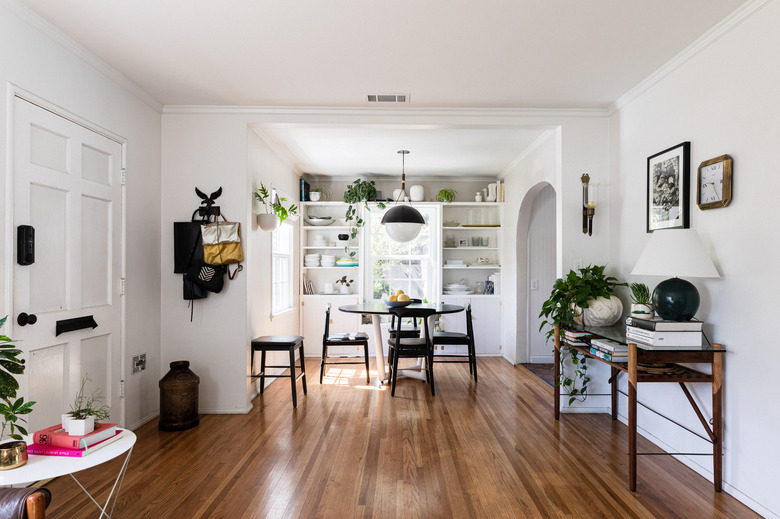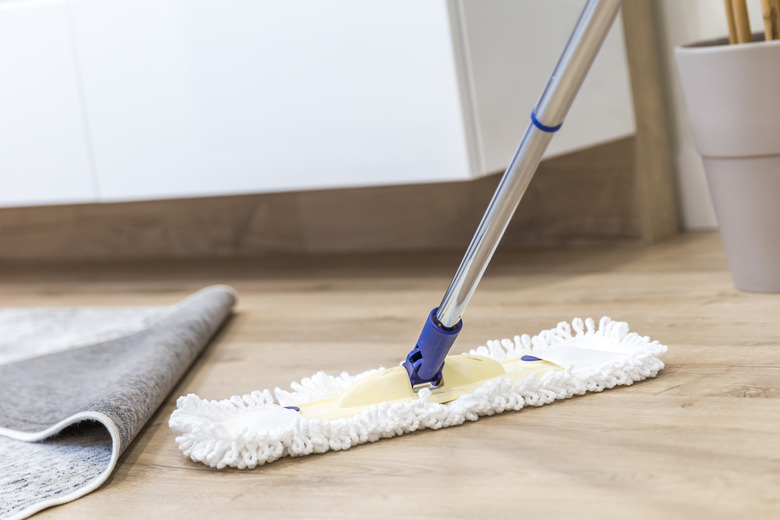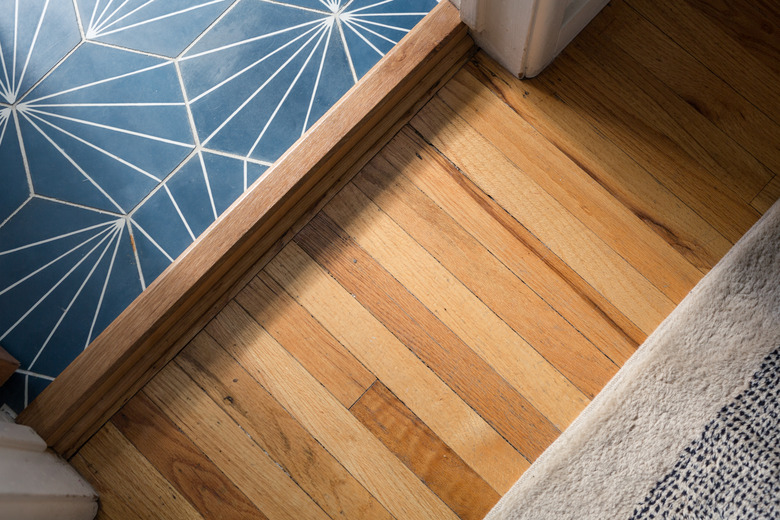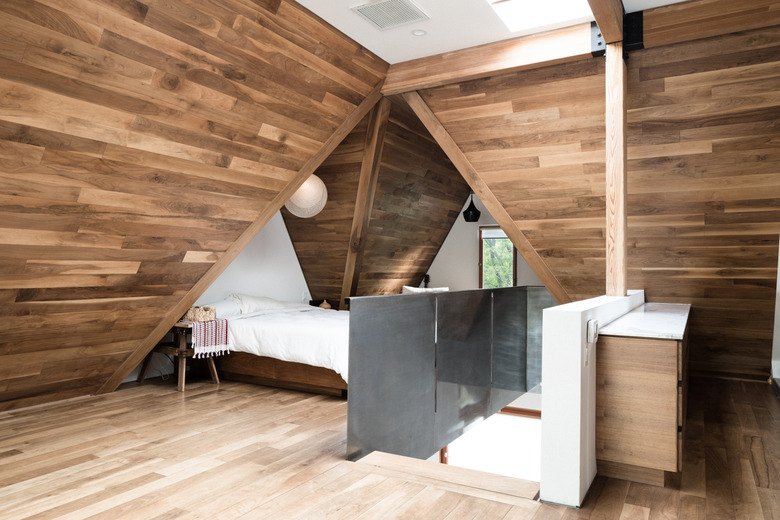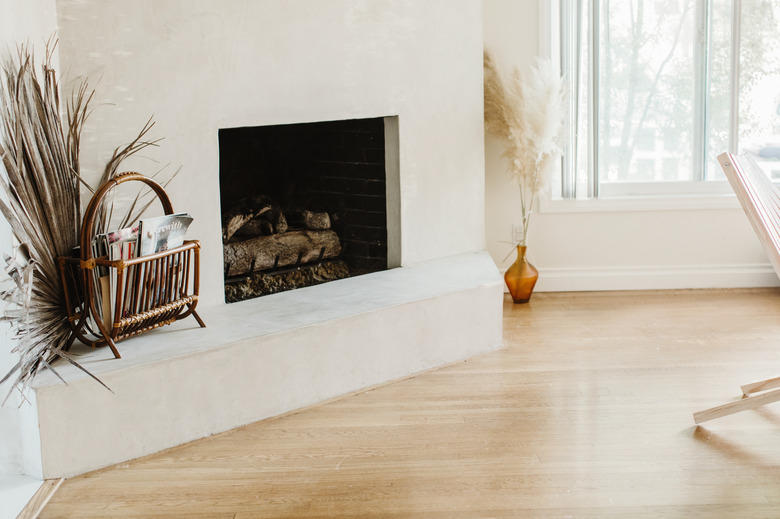Prefinished Hardwood Flooring: What You Need To Know
Hardwood floors can turn an ordinary room extraordinary, but installing unfinished hardwood can often require days of time-consuming and expensive setup. In recent years, though, prefinished hardwood flooring has become a great option. With plenty of colors and wood species from which to choose plus the guarantee of a quick and easy installation, it's a go-to choice for a new floor. Learning more about the various types of prefinished wood can help you figure out which kind will work best in your home.
Advantages of Prefinished Hardwood
Advantages of Prefinished Hardwood
Once you've decided that you want to install hardwood floors in your home, one of the biggest decisions is whether to opt for unfinished or prefinished wood. Unfinished hardwood requires installers to do on-site sanding and finishing, while prefinished flooring comes with a factory finish and is ready for a quick installation. Though both have their pros and cons, there are several reasons you might lean toward prefinished hardwood in your own home:
- Ready right away: Since unfinished wood has to be sanded and finished, the installation process can take days or even weeks, and you may have to wait additional time to be able to walk on the floors or arrange furniture. Prefinished flooring needs no sanding or finishing on site, and installation can take as little as a few hours. The floors are then ready to walk on immediately without any dust or odors. This cuts back on the cost of labor and is super convenient if you're redoing an important room of your home and can't wait to get back to living in it.
- DIY potential: Installing unfinished hardwood floors as a DIY project is a good way to cut down on labor costs, but between the work involved and the equipment required, it's not usually an accessible project for a beginner. Prefinished floors, on the other hand, are often simply nailed to a subfloor, and some can be installed as "floating floors," with no nails or other fasteners. This makes installation much easier for homeowners to do themselves.
- Scratch-resistant: Many pet owners believe that their beloved animals' claws prevent them from getting hardwood floors, but this isn't the case. Most manufacturers of prefinished hardwood use highly durable aluminum oxide and UV-cured finishes. As Old House Journal notes, these finishes are tougher than most site-applied finishes used on traditional solid hardwood flooring. This makes prefinished flooring a better option for pet owners who are set on wood floors as well as people who want to install wood in high-traffic areas.
Engineered vs. Solid Prefinished Wood
Engineered vs. Solid Prefinished Wood
Both prefinished and unfinished wood can be constructed in two different ways: engineered or solid hardwood flooring. A piece of solid wood is made entirely from one type of hardwood. Engineered wood consists of a first layer of hardwood, so there is generally not a difference in appearance between solid and engineered, but below the surface, engineered wood is made up of a composite of other types of wood.
This cuts back on costs since engineered wood can be partially made with less-expensive but still high-quality wood layers. If you're comparing prices among woods of the same species, the solid option is going to be more expensive. However, for a more exotic and expensive wood like tigerwood or Brazilian cherry, you'll probably find that the engineered version is pricier than a solid domestic wood — but an affordable way to buy a high-quality wood.
If you live in a humid climate or are installing wood in a room prone to spills, such as a kitchen or a bathroom, then engineered prefinished hardwood is the best option. Its composite, plywood core has been constructed to be more stable than its organic, solid counterpart, making it less likely to buckle, ripple and warp when wet.
Beveled Edges and Ends
Beveled Edges and Ends
Another construction factor to consider when buying prefinished hardwood flooring products is what types of edges and ends you want. Since prefinished wood isn't sanded on-site, most manufacturers create prefinished wood with beveled edges. This helps to keep the planks even and prevents chipping during the installation process.
You'll notice the edges and ends as the seams or grooves between planks. Beveled edges are the most distinct of those grooves, and they're popular in homes with a rustic feel or with wood finished to look natural and organic. Microbevels are also a popular option. They're less noticeable than bigger bevels and fit in well with a variety of different design aesthetics.
Flooring with square ends and edges is another option. It has a more seamless look than beveled flooring, but it is trickier to install. It also doesn't hide variations in the floor surface as well as flooring with beveled edges.
Choosing which types of edges and ends you want is largely a matter of personal preference. You might also factor in cleaning. Dust and grime can make its way into the larger grooves on beveled edges easier than square or microbeveled alternatives, making it a more high-maintenance option in high-traffic or dusty areas.
Options for Finishes
Options for Finishes
Though you won't be applying the finish on-site, there are still a few different options for prefinished hardwood floor finishes.
- High gloss: Gloss refers to the shine on the floor and is based on personal preference. You might like the look of a high gloss, which makes the floors appear shiny and dramatic. They also catch light well, which makes them popular on darker woods to help a room appear brighter. The gloss often makes floors more durable, though the shine does require more cleaning since the luster shows off every little footprint and smudge.
- Semigloss or lower gloss: Semi or lower glosses also give off some shine but not quite as much as a high gloss. That makes it a popular option for people who want a lower-maintenance option that still has a bit of a glow.
- Satin: This is the lowest-gloss option before matte, and it is a popular choice. This gives off some luster but doesn't quite shine and doesn't highlight smudges the same way a high gloss does. It's a popular option because it shows off the features of the wood without looking too shiny and can be easy to clean.
- Matte: More popular in recent years, matte finishes are great for understated, rustic rooms. They also hold up well in high-traffic areas since they show fewer dings, so they're great for people with pets or kids. However, while they don't show footprints in the same way that a high gloss does, it is more difficult to wipe away dust and debris from these floors.
Prefinished Wood Species
Prefinished Wood Species
The decision about wood species will depend largely on how much you want to spend and what kind of color and feel you desire from your wood. In North America, domestic woods like red oak, white oak and maple are popular due to their affordable price points and lovely natural coloring. Since they're relatively common woods, they're also widely available in different prefinishes.
Hickory is another super durable and gorgeous wood, but its hardness makes it a difficult wood with which to work when it's unfinished. That makes it a popular option for prefinished flooring, since homeowners can get all the benefits of hickory combined with easy installation. Woods that are often undesirably soft, such as American cherry, are also more accessible with prefinished options since a tough factory finish can make them more durable.
You may also be interested in what's known as exotic wood — one not typically found in North America. Varieties such as tigerwood, Brazilian teak, Brazilian cherry, Brazilian walnut, Santos mahogany and Kempas are all exotic woods that are highly desired for their unique graining, rich coloring and timeless feel.
Exotic woods are also typically higher in price and may not be as widely available in prefinished options as they are in unfinished options. If you're able to budget for the higher upfront cost, you'll often appreciate the investment since high-quality exotic flooring often looks wonderful for decades and ups the resale value of a home. The National Wood Flooring Association reports that two-thirds of people imagine wood floors in their dream home.
Take your time to think about your personal design preferences and consider the different ways that your wood flooring will be used in order to determine which prefinished wood product will look and feel best in your home for years to come.
References
- Impressions Flooring: What Are "Edges & Ends" and Why Are They Important?
- Shaw Floors: Hardwood Flooring Edge Types
- Old House Journal: Hardwood vs. Engineered Flooring
- Unique Wood Floors: High Gloss, Semi-Gloss, and Matte Finish... The Choice Is Yours
- Hurst Hardwoods: Hickory Flooring Pros and Cons
- National Wood Flooring Association: Today's Savvy Consumer
